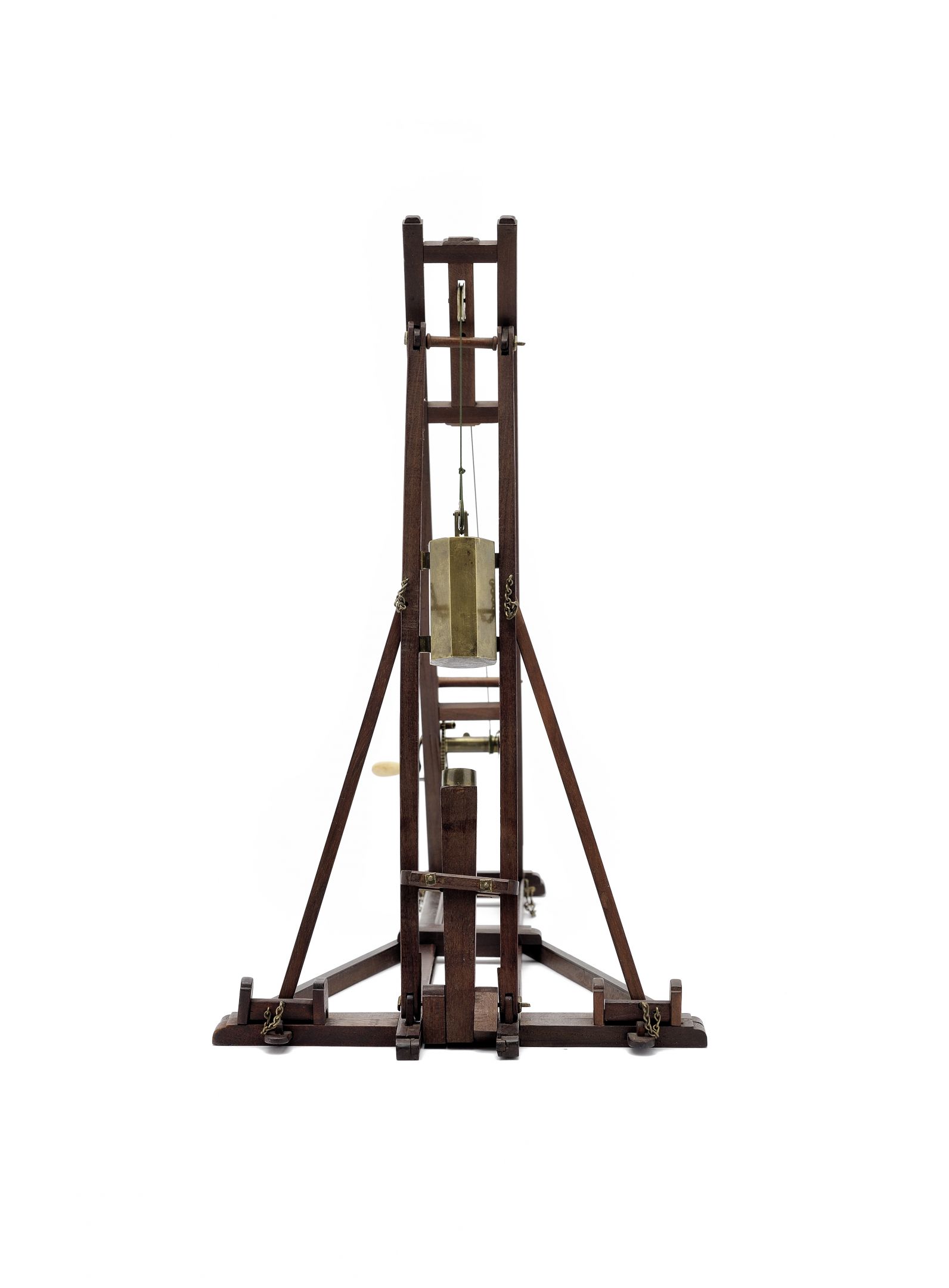Model of a Piling Frame
German, ca 1800
Wood, brass, bone
H 40 cm
Please contact us for further information!
This exquisite model of a pile driver, also known as piling frame, is part of an extraordinary collection of four architectural models representing early modern machines used on construction sites and in mines. All of them are characterised by their functionality, quality and aesthetics, which still impress today far beyond their original use. The didactic composition of the present models, designed to provide a complete view and to show the machines in motion, prove that they served as a teaching aid.
Pile drivers were used in mining, but also on other construction sites. The miniaturised model present is clearly based on an engraving published by Denis Diderot and Jean Baptiste le Rond d'Alembert in the famous Encyclopédie ou Dictionnaire raisonné des sciences, des arts et des métiers in the mid-18th century (Recueil de planches, sur les sciences, les arts libéraus, et les arts méchaniques, avec leur explication. Art de la charpente, Pl. XXIII, Bernard Fecit/ Lucotte del., Paris 1762). Like the other models it is completed by a detailed, movable winch system - despite thesmaller scale, the pile driver is fully functional.
As three dimensional objects, the models, which have been very well preserved, are visually and haptically tangible, which is difficult to convey with two-dimensional images. They were used to teach simple physical connections as well as the foundations of mechanical engineering and the complex interplay of all components required to operate a crane, pile driver or sinking tower economically and profitably. As the famous and well documented model collection in Göttingen shows, such models were used in the eighteenth century for the instruction of functionaries in the higher civil service, who were chosen to receive an education as comprehensive as possible. Other, more specialised collections focused on particular crafts or trade and were used to teach apprentices or students. Traces of usage prove that the present models’ function was valued and that they were used over a considerable period of time. It can be concluded from the design and manufacture of the models that they were created in the end of the eighteenth century in a German-speaking area. Today comparable models can be found in the surviving Göttingen model collection as well as in other natural science collections such as the Kunst- und Naturalienkammer der Frankeschen Stiftungen zu Halle or at the Historische Museum in Hannover. Also, the unique collection of the Modellkammer at the Maximilianmuseum Augsburg comprises several mechanical and hydraulic models from the eighteenth century, which resemble the present models here in terms of their conception and construction.
The present models were certainly once part of a display of models or teaching collection. The fact that they are still in good condition is a rare and fortunate circumstance – during the late nineteenth century most of these collections were dissolved and many models lost or even destroyed. The sinking tower, the pile driver and the cranes present are not only convincing because of their didactic qualities and their extraordinarily good and functional condition: form, size and construction give them an aesthetic individuality and harmonious presence in space quite beyond their mere functionality.
Published in: Raum für Objekte - Ariane Laue Kunsthandel, Kat. III - Nr. 2, München 2014



